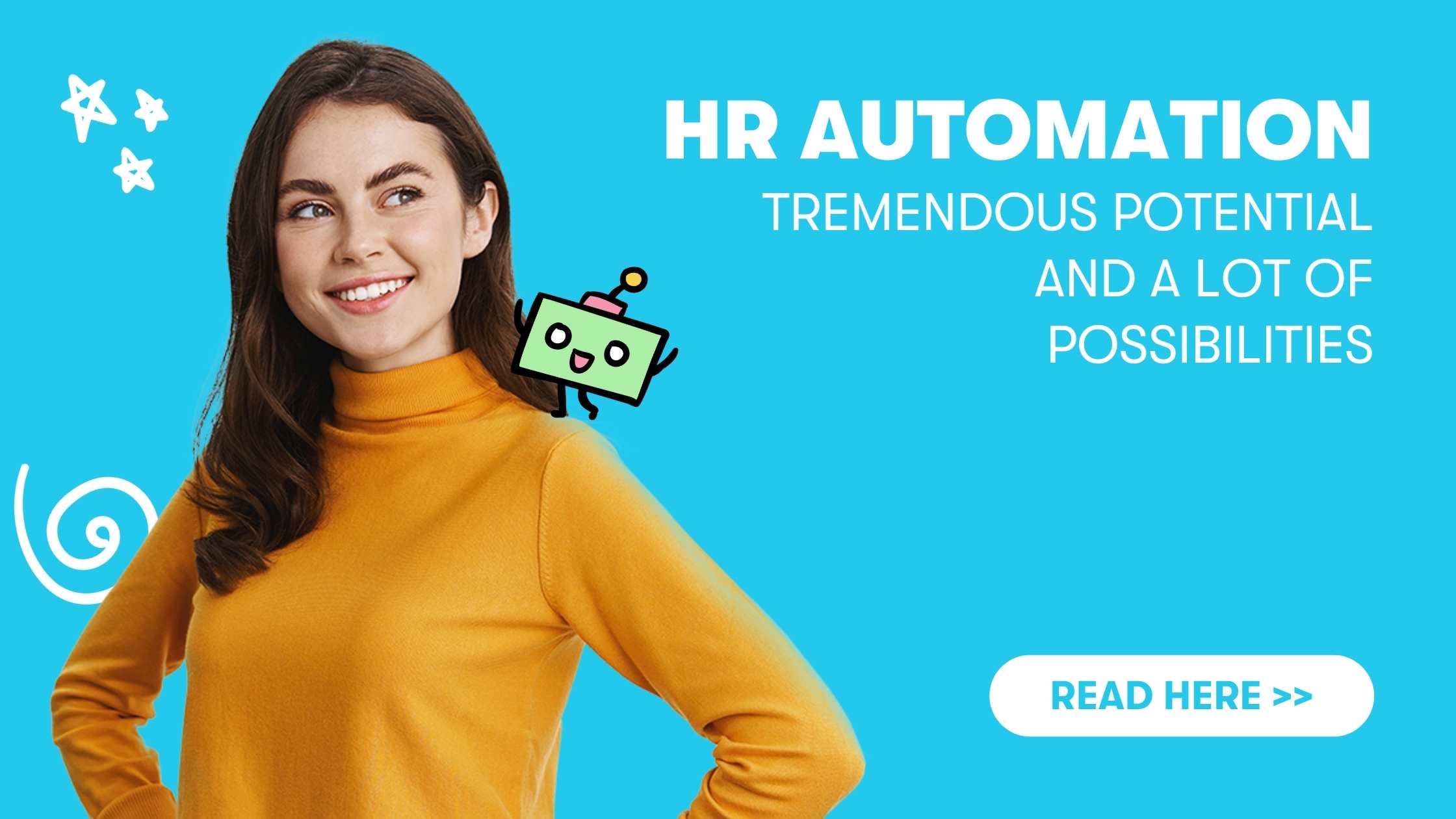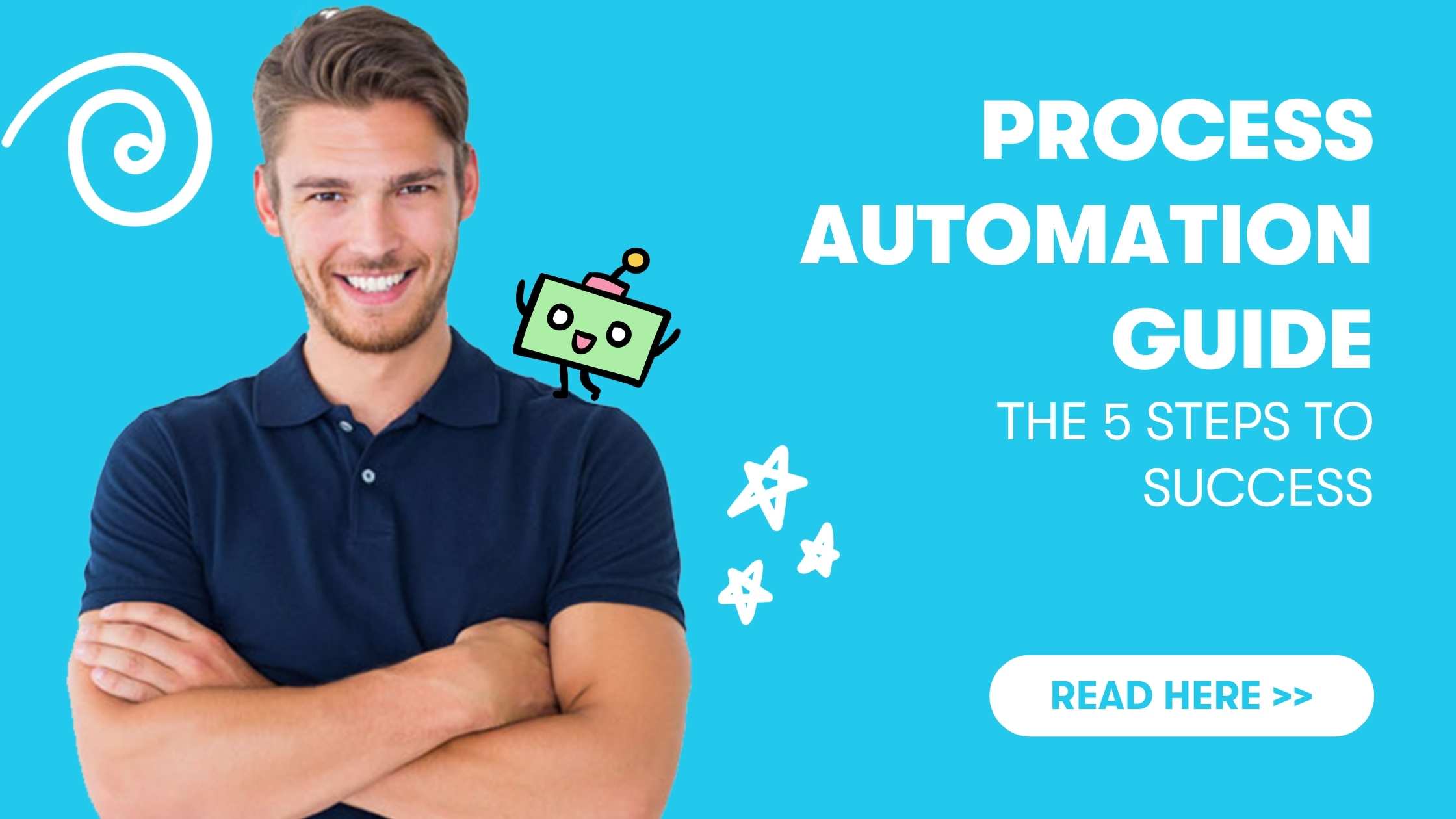Across all industries, human resources (HR) teams are challenged to innovate and develop new ways of working, improving efficiency with the same number of employees while staying ahead in the war for talent. In fact, HR teams large and small spend a lot of time every day doing administrative tasks, sifting through resumes, consolidating timesheets, creating reports, briefing employees, answering policy questions, processing leave requests and parental leave applications, preparing payroll, and the like. There's a lot of hidden potential here for automating internal workflows.
Nevertheless, HR departments still have a hard time with automation in their field. This may also be due to the many articles in which they are repeatedly confronted with statements such as "robots are stealing jobs". But the concern is unfounded. So-called process automation is nothing to be afraid of, but a great opportunity for HR professionals to increase their impact on business success and better support employees.
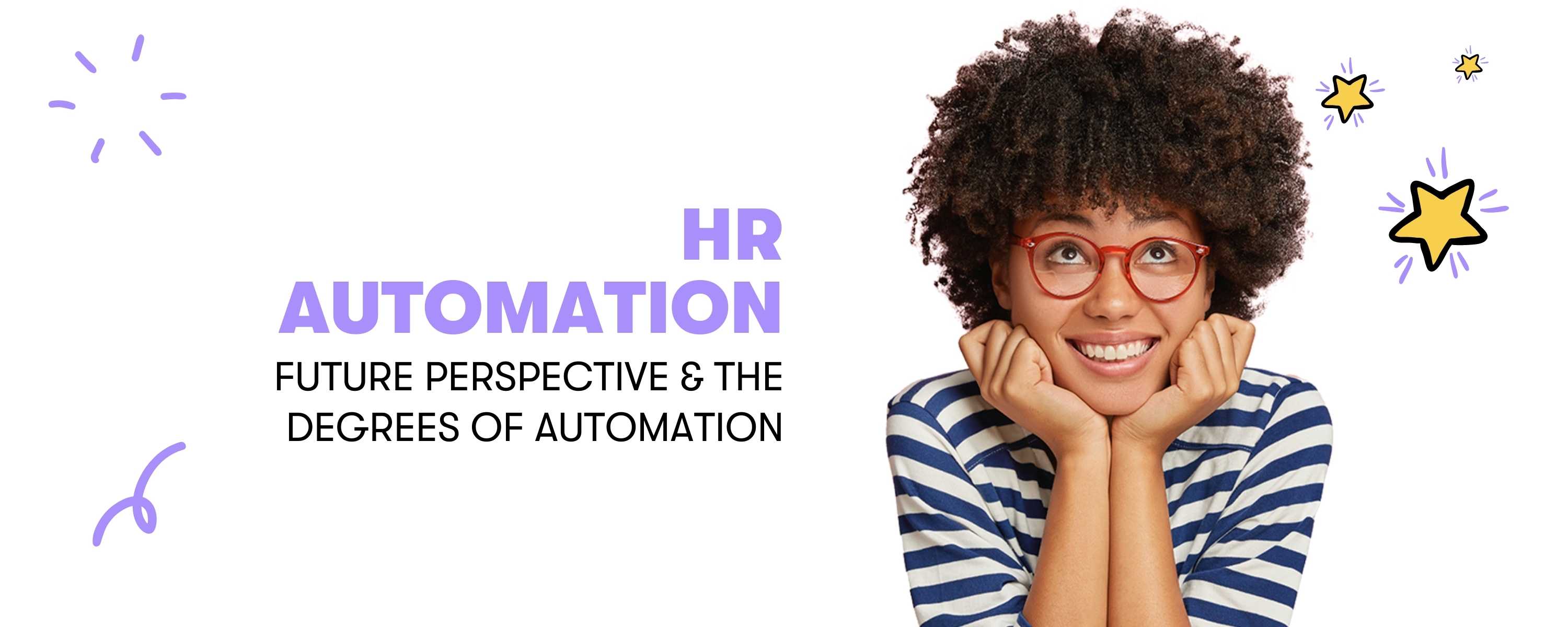
HR Automation
HR automation is the use of digital technologies to minimize human intervention in routine tasks and employee processes to a reasonable level. By automating tasks and processes, Human Resources teams can save time and money, increase fairness and compliance, and improve the overall employee experience. When we talk about HR automation, it's important to keep in mind that we are dealing with two groups that have different perspectives: The HR team, who sees automation as making their job easier, and the employees and staff, who see automation as an anonymous touchpoint to HR.
Future Perspective Of HR Automation
The countless examples from other functional areas show that automation will not make HR jobs obsolete - but it will change the role of the HR department. Despite all the prophecies of doom that automating HR processes will make the relationship between HR and employees more impersonal, HR will instead become more human. By freeing people from handling repetitive requests and manually executing the same processes over and over again, they will have more time for consultative activities and for assisting managers and colleagues with complex issues. They can also focus more on securing the future of the company by thinking about strategies to optimize employer branding.
In addition, HR is becoming more data-driven. More digital touchpoints will generate more data points over time, giving HR managers the ability to gather more feedback, identify the right HR strategy, and iterate on processes. More data also means HR teams can gain real-world insights into their employees' needs and preferences - and then build processes based on those insights. To get an understanding of how to implement HR Automation within the department check out this article!
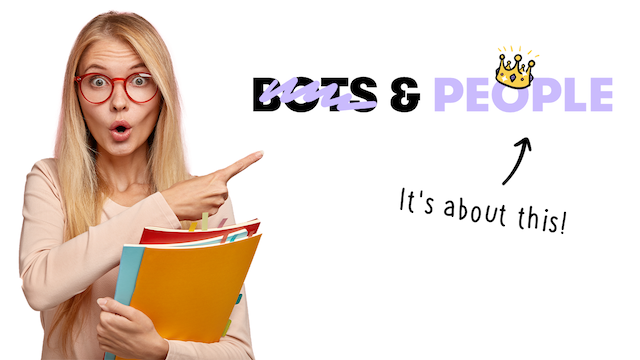
Degrees Of HR Automation
HR automation knows different levels of maturity:
At the lowest level, there is no HR automation at all. HR teams work largely manually and lack digital systems - basically the opposite of "paperless". An example would be an onboarding process where the HR manager has to walk each new employee through every step, from paperwork to system training to account setup.
At the next level, there is some level of task-based automation. Notification emails about the expiration of vacation entitlements are sent out in an automated fashion or payrolls are generated in an automated way.
At the third level, automated self-services help employees find the right information and enable them to complete some tasks themselves. This could be a change in bank details, a quick look at vacation balances, or entering hours into a timesheet.
The fourth level offers the automation of entire processes.
By connecting different systems together, a process can be carried out without a human having to monitor and trigger each step. For example, onboarding automates the entire process, from ordering work materials to setting up accounts to signing paperwork.
Automation Types
There are various ways in which companies can realize the automation of their HR processes. Similar to the choice of maturity level, companies also have it in their hands to determine the way - and thus the scope - themselves.
System-Integrated Automation
System-integrated automation uses functions that are integrated into regular business applications. Here, automation focuses on a set of functional tasks. Collaboration between the various systems rarely if ever takes place and thus stands in the way of a holistic approach to automation. Tools include project management software, human resource information systems (HRIS), payroll systems, and applicant tracking systems (ATS).
Examples of system-integrated technologies are Personio and Workday. Personio supports HR departments with digitized cloud solutions from recruitment and employee data management to employee self-service. The strengths of the application include the wide range of functions and the high degree of automation, which reduces the administrative effort to a minimum, for example in the area of applicant management or payroll.
Example Orderbird
For example, Orderbird AG, which supports more than 10,000 individual restaurateurs in Germany, Austria, Switzerland and France with its iPad POS system, chose Personio because it not only provided them with a solution for their recruiting, but also a variety of important HR management software functionalities in a single tool. With the tool storing and managing all relevant employee data, unnecessary time-consuming steps are now a thing of the past. A number of data no longer need to be transferred, as the transfer is automated. In addition to saving time, data consistency has also improved. In the past, different Excel tables with inconsistent employee data led to confusion in the team. In addition, a lot of time was often lost because data had to be reconciled over and over again. The problem continued into communication, as the inefficient spreadsheets led to lengthy discussions when clarifying data. On average, orderbird AG now saves 20 percent of the time it spent on HR tasks with Personio.
Example Dispensing Desk
To create a scalable foundation for HR management, Spendesk, an all-in-one spend management platform, also turned to Personio. To scale its HR function quickly and internationally, Spendesk needed a streamlined system that replaced its previous tools for tracking employee histories, onboarding tasks, hires and future onboarding, which were spread across multiple platforms. The system also needed to meet staffing requirements in multiple countries. Spendesk now has clean and easy-to-find data in one place. In addition, Personio makes it easier for Spendesk's HR team to conduct surveys, analyze data for specific employee groups, generate reports, and prepare payroll.
Workday provides solutions for spend management, talent management, business planning, workforce planning, payroll, and relies on machine learning to identify employee skills and provide insights that enable organizations to make more informed decisions faster. Automating periodic tasks frees up time for managers to devote more attention to strategic tasks.
Netflix Example
For example, Netflix, a provider of subscription-based online streaming content, chose Workday to improve its external ordering process, automate the closing of its books of business, and complete its financial close faster. Eliminating spreadsheets as data sources or manual reconciliations has increased the speed and accuracy of accrual postings. As a result of automating various processes, the need to manage separate application environments in Google Sheets, Microsoft Excel and integrations is now eliminated. In addition, the scalability of financial operations has been improved.
Automation Across Systems
But one tool is not always enough to automate processes. Cross-system automation adds an automation layer that ties everything together. Especially when processes and workflows are to be automated and streamlined across multiple, disparate systems, an intelligent business process automation platform (iPaaS) is the appropriate tool for different integration scenarios, such as data integration, system integration and hybrid integration. This involves connecting data systems with daily operational work and communication channels to employees. Integromat is such a tool for connecting applications and automating workflows with a visual builder without code. It allows connecting to any API and building complex integrations using built-in apps and tools without the need for coding.
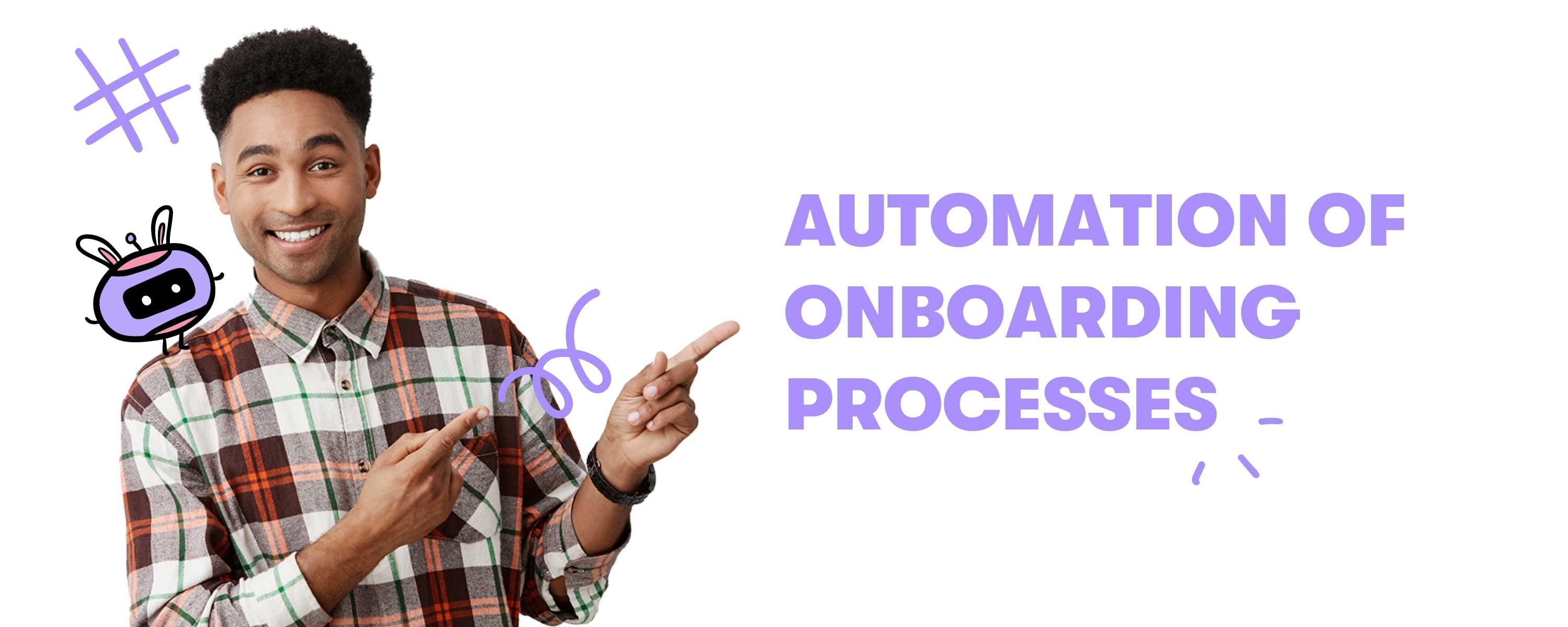
HR Automation: Automated Onboarding Process
Employee onboarding is an important process that poses enormous challenges for many companies. Poorly or badly organized onboarding can have negative consequences. Because the steps in a company's onboarding workflow are typically repetitive, this process is easy to automate with everyday tools. As with other business processes, onboarding involves the exchange of data between the HR department and the new employee. In this case, Airtable serves as the database. The setup and integration is done through Integromat. The automated process ultimately sends an email with links to documents and resources to the new employee and assigns a task on the project management platform. The Airtable record data is then passed to the Slack > Create a Message module. Here, Integromat automatically creates a welcome message.
New Ways In Recruiting
Recruiting technical talent is one of the biggest and most expensive challenges. Recruitment-as-a-Service (RaaS) companies, for example, use global advertising campaigns to attract engineers and developers from all parts of the world, or deploy armies of recruiters to capture all the topsy-turvy candidates on LinkedIn and Xing. Flexiple, on the other hand, decided to leave the beaten path by changing the recruiting process and automating it with Integromat. Freelancers log in to the self-service web dashboard, developed with Flexiple's Webflow, to review new opportunities. Login information is automatically synchronized by Integromat. When a freelancer applies for a project, Integromat stores the details from Webflow in Airtable. Then, Integromat automatically sends a "first reply" email. In addition, Flexiple has also fully automated the creation of freelancer accounts and updating of project details.
Mixed Doubles
Also, Workato, as an Enterprise Automation Platform, enables companies to integrate their applications and automate business processes and get real-time results from business events. The platform uses machine learning and patented technology to make automation creation and deployment faster than traditional platforms. Workato also relies on a mix of API-based and UI-based automation.
Automated HR Onboarding Template For Customer Onbarding
ChowNow leveraged Workato's automation capabilities to automate costly manual employee onboarding and offboarding processes. Manual employee onboarding took about 45 minutes per new hire, while offboarding required about 1 hour per employee let go. ChowNow uses Workato to integrate Zenefits, HR's central information hub, with Office 365 and Slack to provide updates to facilities, HR and hiring managers. This means increased security, scalable hiring, improved employee experience, and significant time and cost savings. In this way, ChowNow has successfully automated 90 percent of its onboarding and offboarding process, increasing the company's productivity, employee experience and security while reducing costs. In addition, Workato's success for HR onboarding and offboarding served as a model for a new automation opportunity: new customer onboarding.
RPA Automation
Automation using Robotic Process Automation (RPA) is a common choice for organizations with many routine processes that are both manual and repetitive. Because RPA interacts through the user interface of applications, this form of automation is primarily suited for systems and applications for which there is no application programming interface (API) or for which the development of a corresponding interface is too complex and too expensive. Since the interaction takes place on the user interface of an application, this form of automation does not require any intervention in the existing systems. However, it also makes sense to combine RPA and API automation technologies to achieve a holistic approach to end-to-end automation.
RPA and API hand in hand
For example, Micro Focus has used RPA to automate the onboarding of new employees, combining UI-based interaction from RPA with API operations. Here, an HR employee triggers the RPA workflow via a self-service portal. The workflow analyzes a PDF form using OCR technology. To do this, the bot uses Office 365 content to create a user in the SAP system. The bot moves between multiple screens and mimics human actions. In the final step, the bot notifies the HR expert responsible for hiring the new employee by automatically sending a chat message via the Slack API.
Document Automation
Document automation can make the handling of hiring documents, vacation requests, timesheets, employee contracts and agreements much more efficient. For example, with Escriba, automated emails and any form of correspondence can be created from Workday with the click of a button. On-premise or cloud-based systems can be connected and the data from the different systems can be mixed in the document.
Simple Document Automation With SAP
Escriba Enterprise Document Services (EDS) enables SAP users to automatically create contracts, documents, emails, attachments, brochures from within the SAP application and call up the associated processes. The templates and templates stored centrally in a database can be used by all SAP systems, modules and platforms. This avoids redundancies and simplifies the maintenance of document and text elements. The Document Services can be integrated into the traditional SAP GUI as well as into modern interfaces, such as SAP UI5. The document language is freely selectable independent of the currently used user interface language. The ESCRIBA Rule Engine allows abstract modeling of the rule content of documents, making contexts and legal spaces selectable.
AI-Assisted Automation
AI-assisted automation is able to process even unstructured data as input and has the ability to learn through experience, expand its knowledge and, above all, make predictions. This is a capability that HR experts particularly value when it comes to employee turnover. Because it's a costly problem for companies. A study by the Center for American Progress found that the cost of replacing employees, especially when replacing executives or highest-paid employees, is significant for most employers. Knowing why and when employees are most likely to leave is important for developing measures to improve employee retention and enables predictive planning for new hires. By using machine learning (ML), HR Analytics can find out how likely an employee is to leave, what indicators point to this, and what actions companies can take to address this, such as a strategic retention plan for each risk assessment group.
Conclusion on HR Automation
Which automation technology is the right one depends largely on the problems that are to be solved, what level of HR automation is being sought, and what the system and application scenarios are. In any case, it makes sense to take a holistic view of the topic in an HR area. Bots & People took this approach, for example, with a management consultancy whose training area was in need of optimization. Together with the employees, all processes were scrutinized and the processes that the employees considered cumbersome and annoying were recorded. These processes were then reviewed again with the respective process owner, taking an in-depth look at the workflow, the technology and the respective business case. Afterwards, the processes in question were prepared, the automation options evaluated and recorded in a Process Definition Document (PDD) for the respective processes. The automation of the relevant processes is then carried out on this basis.
Want to know more about HR Automation?
Check out this article and get to know why HR Automation is still lagging and also our free E-Book on HR Automation & Digitization.
